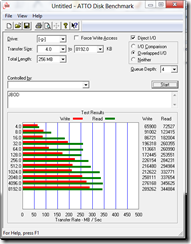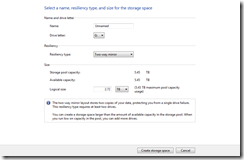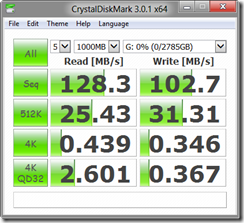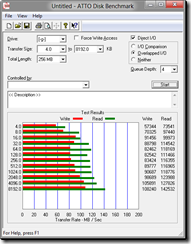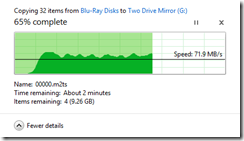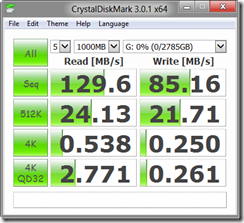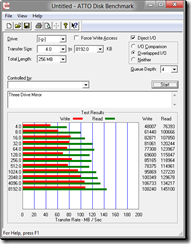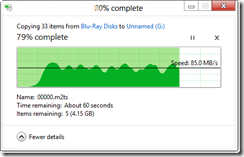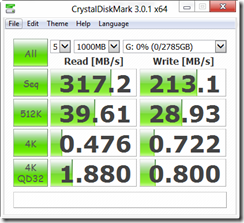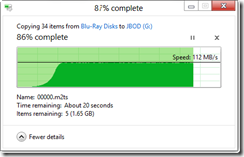In the first part, I performance tested the parity volume to see how it stacked up against a hardware RAID. Now that we have seen the huge performance impact of parity volumes, it was now time to see how the Mirroring as well as the stripe-JBOD (drives are striped with no resiliency) performed.
Original article can be found HERE
I tested all combinations using the same hardware that was used for the parity test. I tested the JBOB/Stripe, as well as a 2 and 3 drive Mirror. Based on performance I am assuming that it is creating a striped array versus a JBOD although I could not verify it. Also, when using one large volume, you cannot choose between 2 or three drive only the allocation size. When using a mirror, you can select how many layers of the mirror that you want as well as how much space you ultimately want.
Two drive Mirror
As you can see from the benchmarks, using a mirror is far more desirable than using a parity if you are going to use Storage Spaces. Overall usability and streaming were fine, and looking at the copy file chart, performance was on par with a single drive. There was some heavy swings in the copy chart but overall was fine for most cases. The downside of course is that you lose space over a parity configuration.
Three Drive Mirror
Not much different in the way of performance using a three drive mirror. Benchmarks are about the same but file copying was a bit more sporadic. The advantage is you have two additional layers of protection which might be an overkill if you are backing up to an external location or cloud service. The downside is you use three drives to do the job.
Stripe/JBOD
As expected, performance was significantly higher in this configuration. I could not verify how this was configured but based on the performance charts, I am guessing that it configures as a stripe not JBOD. Besides the benchmarks, the file copy was extremely smooth and constant with little to no fluctuation. The downside is there is no resiliency in this configuration nor can you control how many hard disks it uses
Conclusion
It is pretty obvious from looking at the benchmarks and comparing to the parity testing that either of these configuration is preferable in terms of performance. Every configuration has give and takes but for modest needs, the mirror seems to be great way to go. It performs pretty well, it is scalable, and of course it provides hardware resiliency (duplication). Since Storage Spaces works on the provision approach, you can provision for a larger drive, say 5T, and your mirror will simply scale the configuration automatically you have till you reach the desire space simply by adding hard drives.

